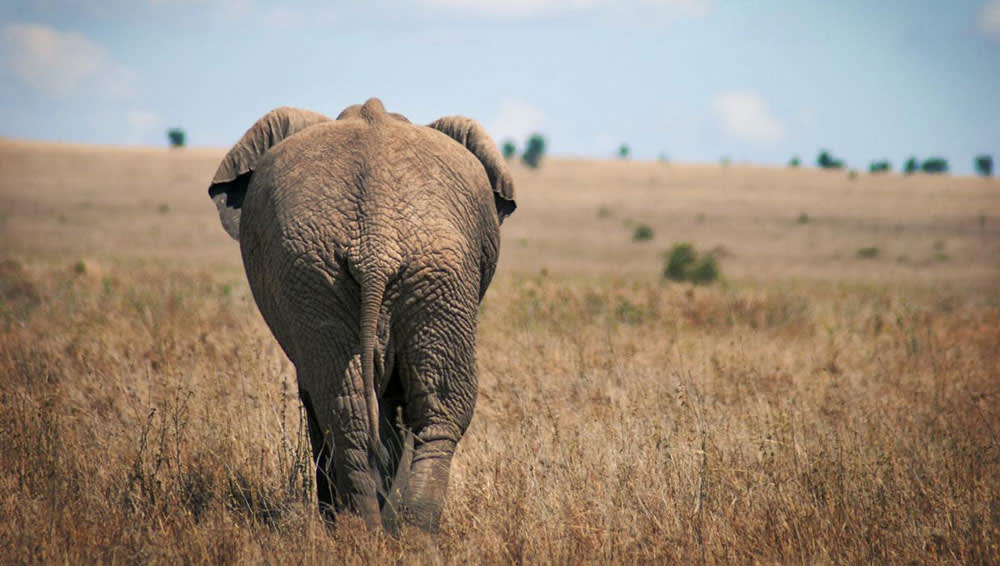Kenya & Tanzania Adventure

Shape your adventure: With Extensions, every beginning and ending is yours to create. Learn More.
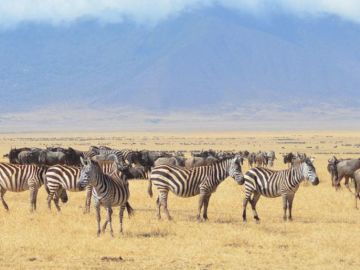
Mankind has largely managed to tame this fragile planet, which has made it an increasingly difficult challenge for nature-loving travelers to find pristine places to explore.
East Africa’s Serengeti—which encompasses Tanzania’s Serengeti National Park and Kenya’s Maasai Mara National Reserve—is one of those rare destinations that allows visitors to enter a truly wild landscape. Here you can take in sights and sounds much like those that humanity’s earliest ancestors might have experienced.
A Serengeti safari fully engages all of your senses, which is really a welcome rarity in this modern technology-obsessed era. It’s a place that offers animal sightings as abundant as the world’s largest zoos, but without all the cages and concrete. It offers us a chance to see an incredible range of wildlife as it was meant to be seen—in the wild. You can watch the circle of life play out before your very eyes on a daily basis, which leaves you feeling a much deeper sense of attachment to the natural world.
The first step in planning your Serengeti safari is deciding what exactly it is that you want to get out of it. A trip to the Serengeti is a once-in-a-lifetime opportunity for most people, so it’s important to do your research in order to ensure you get the most out of the experience.
With that in mind, let’s take a look at what you can expect from a Serengeti National Park safari. This handy guide will help inform you on the best time to visit Tanzania’s oldest national park, how to prepare, what to pack for the trip, what animals you can expect to see there, and additional parks and reserves in the area you should attempt to include on your itinerary.
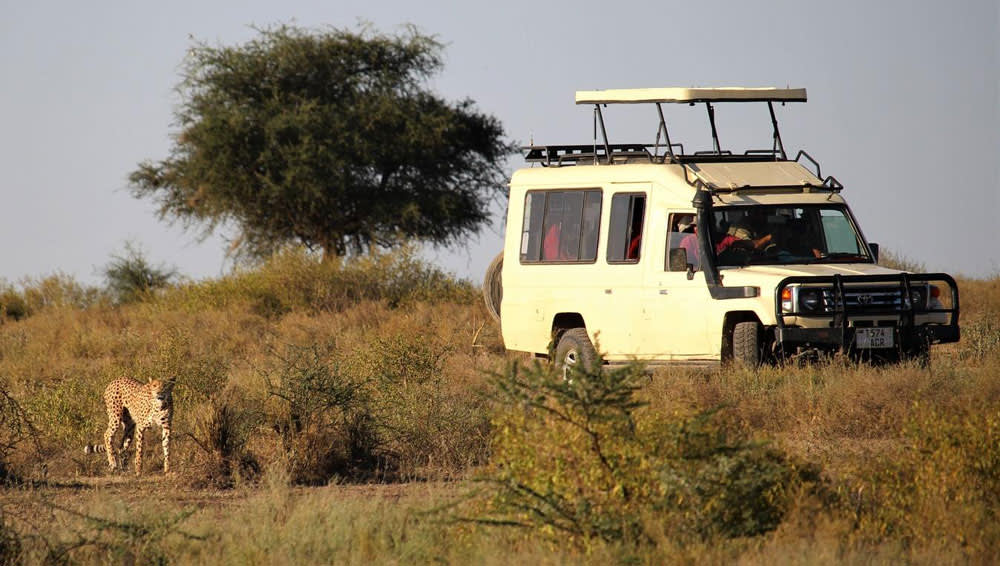
The History of Serengeti National Park
Long before European explorers and big game hunters first set foot in the Serengeti, the area was home to the Maasai. For hundreds of years before these fertile African plains were introduced to the outside world, the Maasai people led a semi-nomadic lifestyle here, herding and grazing their livestock and coexisting with the local wildlife.
Things began to change for the Maasai after Austrian explorer Oscar Baumann made his way to East Africa near the end of the 19th century. Baumann was the first European to bring worldwide attention, but he was soon followed by Stewart Edward White, the first American to set foot on the plains in the early 1900s.
These early visitors from the west quickly recognized the beauty of the Serengeti. But in those days, exploration was all about seizing that beauty and bringing it back to their homeland. Big game hunters arrived to wreak havoc on the Serengeti, killing countless lions, leopards, and antelope species and transforming them into trophies. Soon the wildlife of the Serengeti became increasingly scarce. It was apparent to conservationists that something needed to be done in order to preserve this pristine piece of Africa.
The Serengeti was first established as a small game reserve in the 1920s, and ultimately became the first of Tanzania’s national parks in 1951. While this provided much-needed protection for the animals, it wound up forcing the Maasai to relocate from the park to the Ngorongoro Conservation Area. In 1981, Serengeti National Park became a UNESCO World Heritage Site, and today it encompasses 5,695 square miles of grassland plains, woodlands, and rivers.
Today’s East African safaris allow you to follow in the footsteps of great writers like Ernest Hemingway, whose safari experiences led him to craft great literary works such as The Snows of Kilimanjaro. Or explorers like David Livingstone, who is believed to be the first European to view the mighty Victoria Falls in Zambia and Zimbabwe.
Thankfully, today’s travelers don’t have to suffer the many hardships and discomforts that early explorers faced. Instead, you can experience the Serengeti in surprising comfort and luxury, as long as you choose the right tour operator.
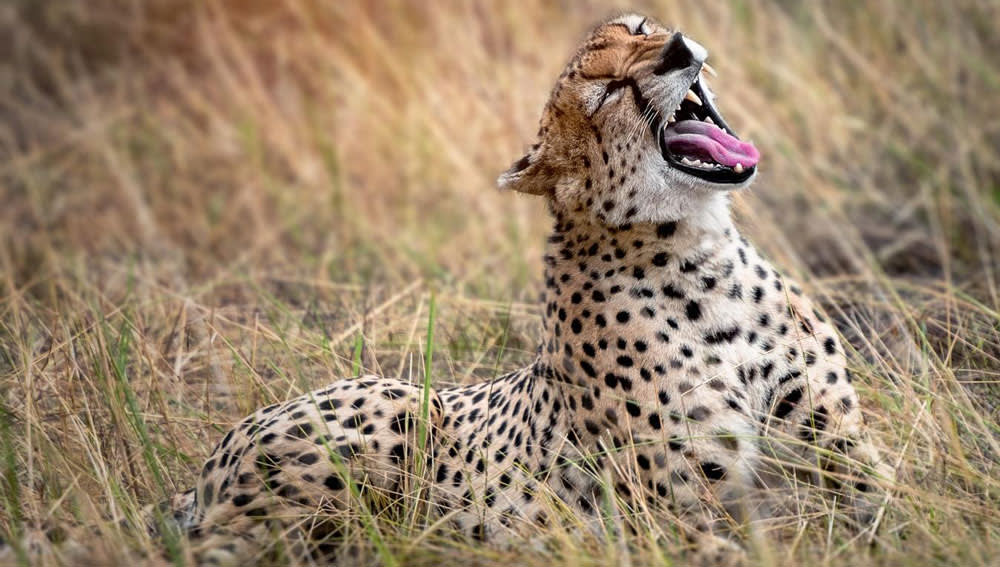
The Best Time to Visit the Serengeti
Wildlife-rich Serengeti National Park provides excellent animal sightings all throughout the year. But certain months may be more appealing to you, depending on what types of animals and experiences you’re looking for.
The Serengeti has a few different wet and dry seasons, with the June to October dry months generally being considered the peak season for travelers. It is during this period when you can usually catch the Great Migration of wildebeest, zebra, and various antelope species crossing rivers like the Grumeti and Mara.
While you may have to share these awesome animal experiences with other safari groups traveling through the Serengeti during the dry season, it generally provides the best viewing of East Africa’s most iconic animals. Wildlife becomes more concentrated around watering holes and vegetation thins out, providing you with better viewing opportunities. It’s the best time to see many large herbivores (elephants, giraffes, etc.) as well as the top predators. You’ll also benefit from most lodges and roads being open.
For avid birdwatchers, November to April provides better opportunities to observe an abundance of avian species. Migratory species arrive from Europe and Northern Africa, and many birds will be displaying their colorful breeding plumage. But the rains also bring the mosquitoes, which may be a deterrent for some travelers.
The wet season is broken down into the short rains, which occur in November and December, and the long rains of March and April. A brief dry spell takes place in January and February, and this is when you can witness the wildebeest calving season. The calving season can be both heartwarming and tragic to witness, as these newborns often become easy prey for predators such as cheetahs, hyenas, leopards, and lions.
As the long, heavy rains begin to fall from March to May, you may find that a number of lodges and roads become inaccessible. While there may be limitations on where you can travel in Serengeti National Park during the peak wet season, wildlife sightings become more intimate during this time due to the lack of tourists, and safari prices may drop significantly.
The best advice may be to visit the Serengeti during the main dry season if you’re planning your first visit, and then plan a wet season safari should you return for a second visit. This will allow you to see how the Serengeti ecosystem evolves throughout the year.
After you figure out when you want to visit Serengeti National Park, it’s equally important to figure out how long you should take to explore the area and how far in advance you should book your Serengeti safari. Traveling to the Serengeti is not something that should be rushed. The wildlife-rich region usually provides so many incredible experiences that many visitors leave wishing they had more time to spend discovering all it has to offer.
If your budget allows, we recommend spending at least two weeks in Serengeti National Park and the surrounding areas. This will allow you time to see a great deal of the park and its wildlife, as well as other nearby national parks and reserves that offer their own unique experiences.
If you’re planning to visit during the peak season, you’ll need to book as far in advance as possible in order to secure the safari you most desire. The top Serengeti safari tours and lodges are usually fairly small and often book out early in the year. You don’t want to be left having to sacrifice comfort or the success of your safari by settling on a sub-standard tour operator.
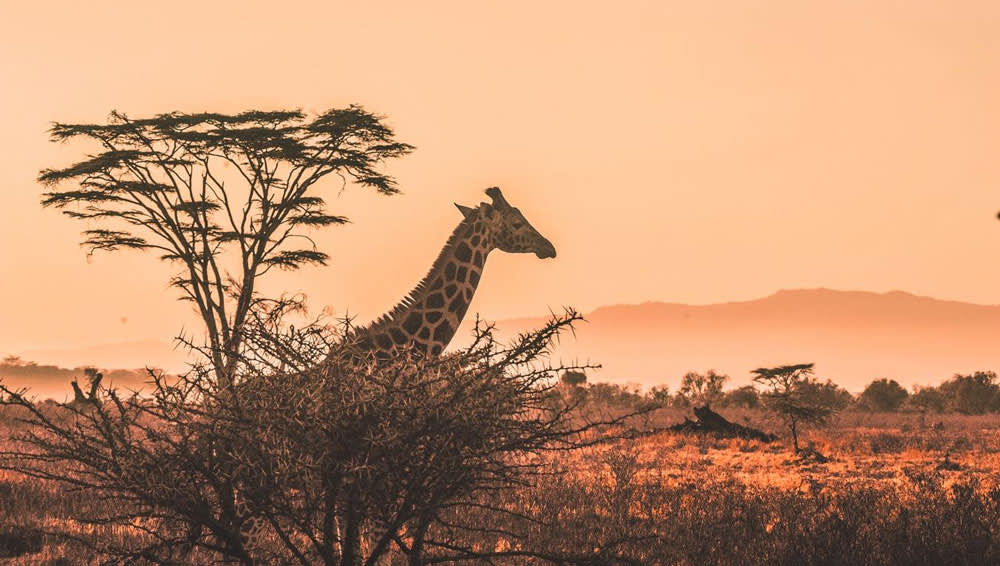
PACKING FOR A SERENGETI SAFARI
Passport: Once you choose your Serengeti National Park safari, you’ll need to make sure your passport is up to date, with at least six months of validity left on it.
Visa: You’ll need to obtain a visa for Tanzania, along with one for Kenya if you plan on visiting the Maasai Mara. Citizens of nearly all countries outside East Africa (including the United States) are required to get a visa in order to enter Tanzania. It’s generally better to secure your visa in advance, but you may be able to obtain a tourist visa at the Tanzania airport when you arrive, depending on your nationality.
Vaccines: It’s also a requirement that you be vaccinated for Yellow Fever: You’ll be asked to show proof of your vaccination records upon entry into the country. Malaria is present within the region, so you should talk to your doctor about the various malaria medications that are available to you.
Medications: You’ll also want to pack over-the-counter medications to relieve things like headaches and diarrhea, as they may not be readily available while you’re on safari. Of course, you ‘ll want to make certain to pack more than enough of any prescription medications you are taking, along with extra pairs of contacts or eyeglasses if you require them.
Clothing: Although it is generally warm in the Serengeti, it’s a good idea to pack long pants and shirts to deter biting insects and to protect you from foliage during hikes. A good pair of durable hiking boots will help keep your feet protected from any acacia spines or other potential dangers, such as snakes. If you plan on purchasing a new pair of hiking boots, be sure to break them in before your trip to avoid blisters and discomfort during your safari.
Camera: Many wildlife encounters you’ll experience in the Serengeti will be at a surprisingly close range. But it is a good idea to invest in a quality camera with telephoto zoom capabilities if you want to adequately capture all the once-in-a-lifetime memories. Be sure to pack plenty of memory cards and purchase spare chargeable batteries, since you may not always have access to electricity in the tented safari camps. You can leave your drone at home since they are not allowed to be used within Serengeti National Park and many of the other nearby reserves. It’s also a good idea to pack a headlamp or flashlight if you plan on camping in any of the parks.
Toiletries: Recommended toiletries to bring include plenty of moisturizer for your skin, lips, and hair during the dry season. Bring proper sunscreen, sunglasses, and a hat to shield you from the midday sun, which can be quite harsh at times.
Cash: Quality Serengeti safaris will often be inclusive of your accommodations, meals, transport, excursions, and most gratuities. However, you will want to carry enough cash to cover any extra meals, alcohol, souvenirs, and optional activities. Most places (including some villages) you may visit will accept U.S. dollars. Credit cards may be accepted, but you shouldn’t solely rely on them.
Other Items: Many tour companies will provide you with bottled water, and it is highly advised that you stick to either bottled water or treated water during your entire visit to avoid waterborne diseases. Carrying hand sanitizer is a good idea in order to properly clean up before eating meals in the field. You may also want to consider purchasing travel insurance, just in case you’re unlucky and manage to fall ill. Travel insurance can help protect you financially from a wide range of medical treatments that you may require.
Plastic Bag Ban: Tanzania is enforcing a ban on plastic bags in an effort to reduce global plastic waste. The ban will apply to the importation, production, sale, and use of all plastic bags. When packing for Tanzania, make sure your checked luggage and carry-on does not contain any plastic bags. The ban on plastic will also apply to anything purchased in airports/duty-free and includes small plastic Ziplock bags that many use to carry toiletries. Should you have any plastic bags on your person upon arrival, they must be left on the aircraft or you may be subject to substantial fines. Reusable alternatives are available in stores to replace the use of plastic bags.
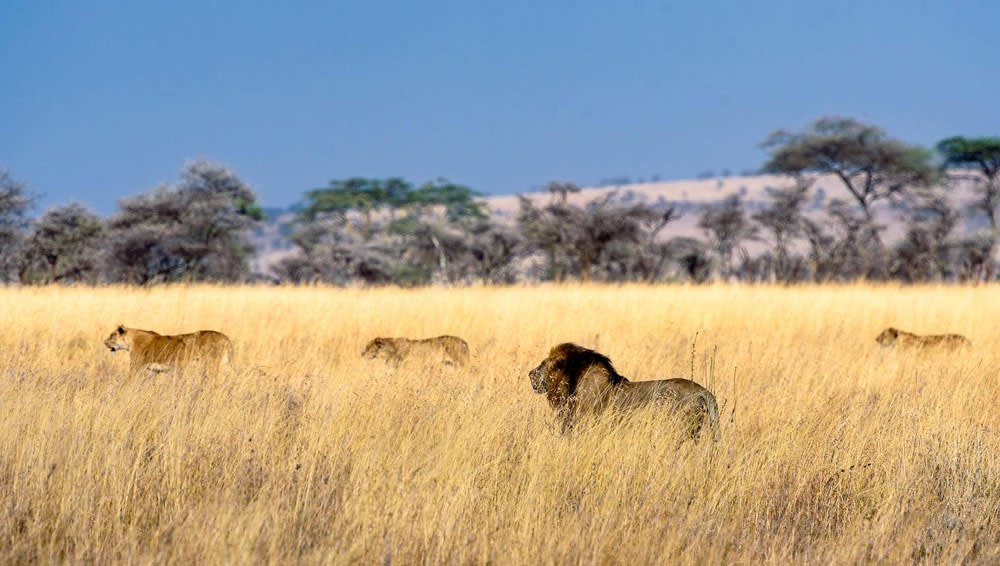
SERENGETI NATIONAL PARK ACCOMMODATIONS
There are a range of different accommodation options available in and around Serengeti National Park. A good safari tour operator will combine a series of lodges, hotels, and safari camps to offer a mixture of adventure and comfort.
Public Campsites: The park’s public campsites are pretty basic, offering few facilities. Whereas the more luxury permanent tented camps provided by some tour operators will allow you to have a private bathroom, with hot water for showers. You won’t find these luxuries in the public campsites, nor will you find toiletry items like soap or toilet paper.
Permanent Tented Camps: When you stay in the various Serengeti tented camps, you won’t feel like you’re sacrificing many essentials or comforts of a hotel. Yet you still feel like you’re in the wild, where you can hear the cackling laughs of hyenas or the crackling limbs of elephants feeding on acacia through the canvas of your tent. Booking a Serengeti safari with a tour company also saves time because you won’t need to plan and cook meals or set up your tent and campsite. Staff are always there to assist with things you may need, and provide safety at night when predators become most active.
Lodges/Hotels: Including lodges and hotels in your safari itinerary gives you a chance to have laundry done, catch up on emails with Wi-Fi, and relax in refreshing pools. You can enjoy delicious restaurants that serve up locally inspired dishes, allowing you to sample seasonal produce. But the wildlife watching doesn’t end, as many luxury lodges offer watering holes with viewing decks where you can observe the many animals that they attract. Lodges and hotels often have libraries where you can gain a more thorough knowledge of the places and wildlife you have seen on your safari game drives through the parks and reserves.
Choosing a safari that provides accommodations with comfort and amenities is important for feeling refreshed each day, allowing you to focus on spotting wildlife and taking in the stunning landscapes. Having everything arranged for you during your stay allows you to travel stress-free, with an itinerary that is guaranteed to provide you with countless memorable experiences. Trying to “rough it” to save a few bucks during a Serengeti safari can easily wear you down quickly, especially when you aren’t used to full-day adventures in the outdoors day after day. Having a good night’s sleep and filling meals can do wonders for your body and mind.
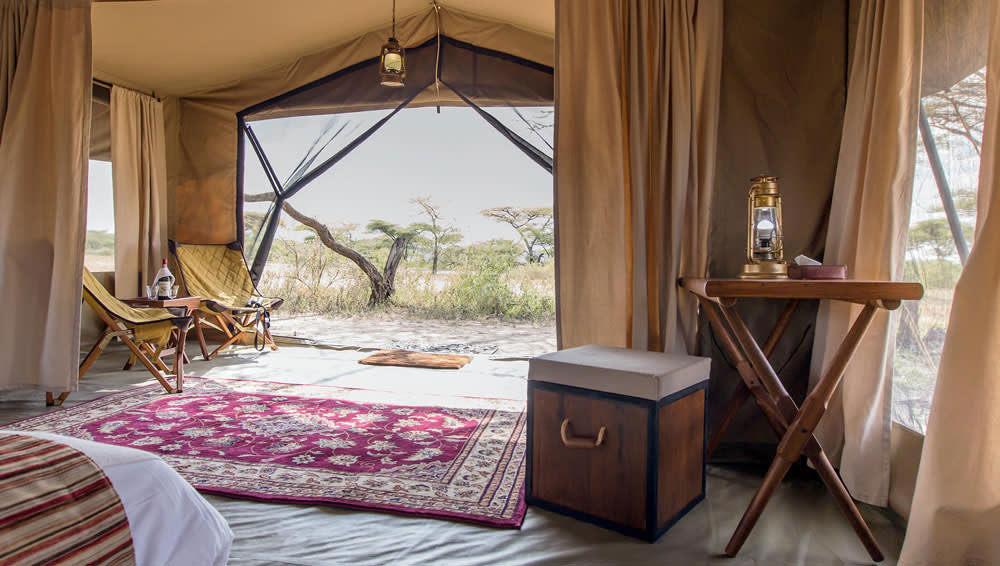
Serengeti National Park Wildlife
The Serengeti is one of the few places where you can witness all “Big Five” animals living together in the wild. The lion, leopard, rhinoceros, elephant, and Cape buffalo are now more prized as wildlife photography subjects, rather than trophies. These majestic creatures join the millions of wildebeest, giraffes, and zebras that form the Great Migration, which passes through the park each year.
Daytime wildlife safari drives allow you to get up close to the action, including one of Africa’s largest populations of lions (around 3,000 in the Serengeti). Lion prides and predators such as cheetahs, leopards, and hyenas are all commonly spotted within the park. Herds of massive Cape buffalo travel alongside wildebeest and zebras as they approach lakes and rivers, which are home to wallowing hippos and Nile crocodiles. Lucky visitors may also spot harder-to-find species such as the bushbaby and the black rhino.
Sightings of popular animals such as giraffes, elephants, baboons, and warthogs are very common. But keep an eye out for lesser-known species, like hyraxes, honey badgers, African golden wolves, crested porcupines, aardwolves, and bat-eared foxes. You might also come across chameleons, colorful agama lizards, and Nile monitor lizards.
Although night-time drives are not allowed within Serengeti National Park, you can experience them just outside the boundaries of the park. Night-time safaris allow you to watch predators hunt and spot seldom-seen nocturnal species, like aardvarks and African civets.
Antelope species you may encounter include the giant eland as well as the extremely small dik-dik. Thomson’s gazelles and Grant’s gazelles walk the plains along with topis and waterbuck. The surrounding woodlands are often home to bushbucks, steenboks, impalas, and adorable klipspringers (which are often seen standing on top of the granite kopjes). You may even spot the more elusive oryx or lesser kudu, both which sport incredibly longhorns.
Birdwatchers will be pleased to know that you’re also likely to spot hundreds of different bird species within the park. You may be aware of the ostriches and vultures that call the Serengeti home, but the park is also home to unique birds of prey, like secretary birds and large African fish eagles. You may come across fascinating hornbills (which often feature large casques on their bills) and comical helmeted guinea fowl. Look for colorful bee-eaters, superb starlings, and lilac-breasted rollers as well as dozens of Tanzania’s endemic bird species, like Fischer’s lovebird and the Rufous-tailed weaver.
While safari drives are the primary form of transport you will use to seek out wildlife in the Serengeti, there may be options to explore the plains on horseback or witness the magic from high above by taking a hot air balloon flight. For the truly adventurous, you can even look into a walking safari, where you can safely explore the area on foot with a trained local guide.
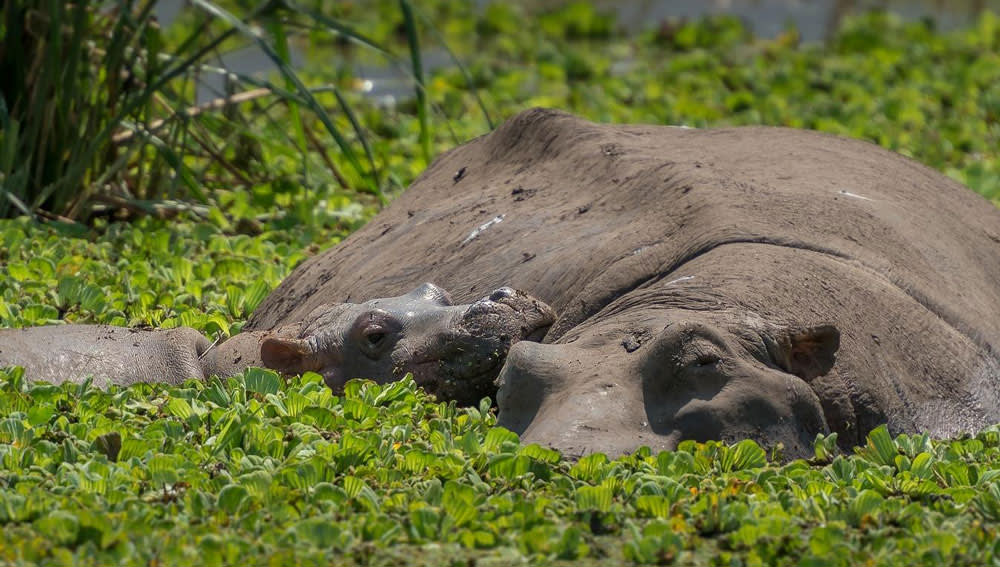
The Great Migration
One of the Serengeti’s biggest draws is the chance to witness the largest land-based migration in the world, also known as Africa’s Great Migration. The migration is made up of around one to two million blue wildebeest, hundreds of thousands of zebras, and numerous other antelope species. The annual migration is a continuous circuit that the animals follow as they search for fresh grass that is provided by the rains. Seeing this incredible natural event in person is unlike anything else on the planet!
While the exact path and timing of the migration is constantly evolving based on weather conditions, it always takes place across the Serengeti plains of Tanzania and Kenya. The migration flows through Serengeti National Park, the Maasai Mara Reserve, and the Ngorongoro Conservation Area. The animals face dangerous river crossings, where many fall victim to drowning and the jaws of hungry Nile crocodiles. The many that die along the way (including those that perish from fatigue, starvation, and thirst) serve to feed predators, enrich the soil and river ecosystem, and thin the herds to ensure that only the strongest members survive.
The migration is always moving, but there are defined periods when you can expect to find the animals in certain locations. From late December through early March you can catch enormous herds in the southern Serengeti and Ngorongoro Conservation Area, where females give birth to the next generation. After this calving season, the herds move on towards the Serengeti’s western corridor, beginning around April. Heavy rains close many of the area’s roads during this time, making following the migration difficult. The animals are spread out during this period anyway, which makes viewing not nearly as impressive.
Come June through October, the herds will congregate once again as they attempt to cross both the Mara and Grumeti Rivers and make their way into the northern Serengeti and Kenya’s Maasai Mara National Reserve. As the short rains of November and December set in, the herds will turn around and make their way south, completing the circuit when they reach the calving grounds of the southern Serengeti once again around the start of the year.
Whether you witness the Great Migration at the dramatic river crossings or simply grazing the plains of the Serengeti and Maasai Mara, the experience of seeing such an enormous gathering of animals is something that’s difficult to express. You find yourself torn between rooting for wildebeests and zebras to survive, but understanding that some must perish in order for the many endangered and threatened predators to live on.
When it comes to the Great Migration, there really are no heroes or villains. Each species deserves a chance at life, and the natural system of “survival of the fittest” ensures these species will live on for future generations to enjoy.
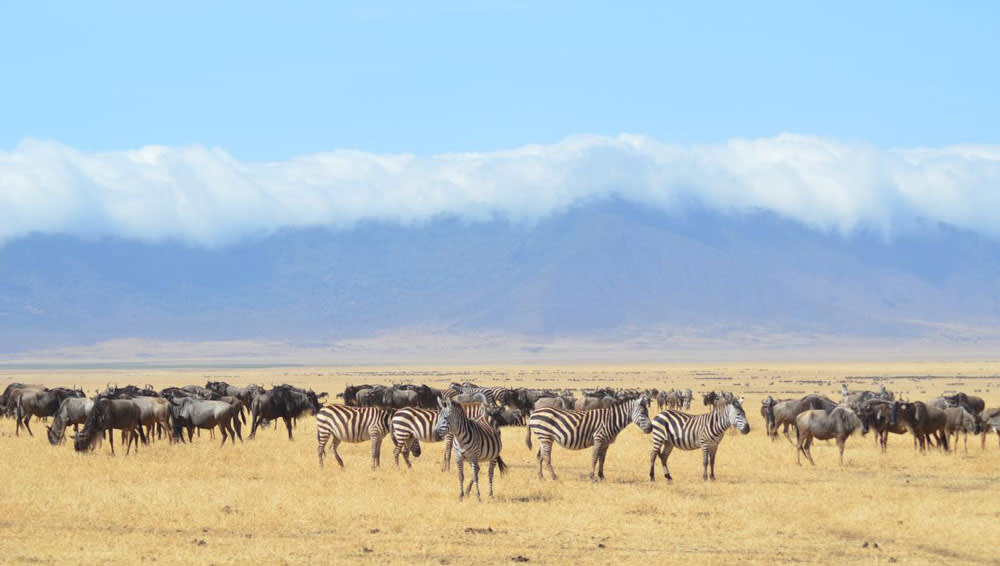
Nearby National Parks and Conservation Areas
While Serengeti National Park will be the main attraction for most visitors, you’d be doing yourself a great disservice by not visiting the surrounding parks and reserves in both Tanzania and Kenya. Each offers its own unique character and can easily be incorporated into your Serengeti safari.
Lake Manyara National Park: This small park in Tanzania can easily be explored in a day. While it doesn’t offer the large numbers of big game animals you’ll see in the Serengeti, it is enjoyable to check out en route to the Ngorongoro Conservation Area. The lake is a good option for birdwatchers, as it offers numerous birds of prey as well as large flocks of flamingoes at certain times. You can also expect to see large numbers of elephants and baboons here. There’s also the possibility of spotting the famous resident lions, which have been known to lounge in the branches of the park’s acacia trees.
Ngorongoro Crater: Seeing Tanzania’s Ngorongoro Conservation Area in conjunction with Serengeti National Park is a must. Set inside a giant caldera, it offers a great chance at seeing Africa’s Big Five in a dramatic setting. The elephants of Ngorongoro sport giant tusks and there are several black rhinos within the park. This area is very popular with visitors, so you’ll likely share your experiences with myriad tour groups. But it often offers an opportunity to witness lions hunting down game and hyenas scavenging the leftovers. Permanent springs and streams provide plenty of freshwater, which is what draws so many animals here.
Tarangire National Park: Those wanting to escape the tourist crowds may want to head to Tarangire, which offers exceptional wildlife viewing during the dry season. Compared to Ngorongoro, it’s much less frequently visited by those booking safaris through the Serengeti. This park is one of Tanzania’s premier birding destinations, offering up hundreds of resident species. The park’s large population of elephants often steals the show, but you may also be able to achieve rare sightings of oryxes and African wild dogs here. The area’s termite mounds are also a great place to look for dwarf and banded mongooses.
Maasai Mara National Reserve: Moving into Kenya, the Maasai Mara is most notable for the role it plays in the Great Migration circuit. Here you can witness well over a million wildebeest and zebras alongside other antelope species, from around July to September. Even after the huge herds have left, large numbers of lions, leopards, and cheetahs can still be found within the reserve.
Amboseli National Park: This park in southern Kenya provides additional world-class birdwatching opportunities, with exceptional views of Mount Kilimanjaro. The mountain may even beckon you to attempt to reach its summit on foot. Standing at just over 16,000 feet, Kilimanjaro holds the title of the world’s tallest freestanding mountain, offering adventurous visitors a chance to trek to the true roof of Africa.
